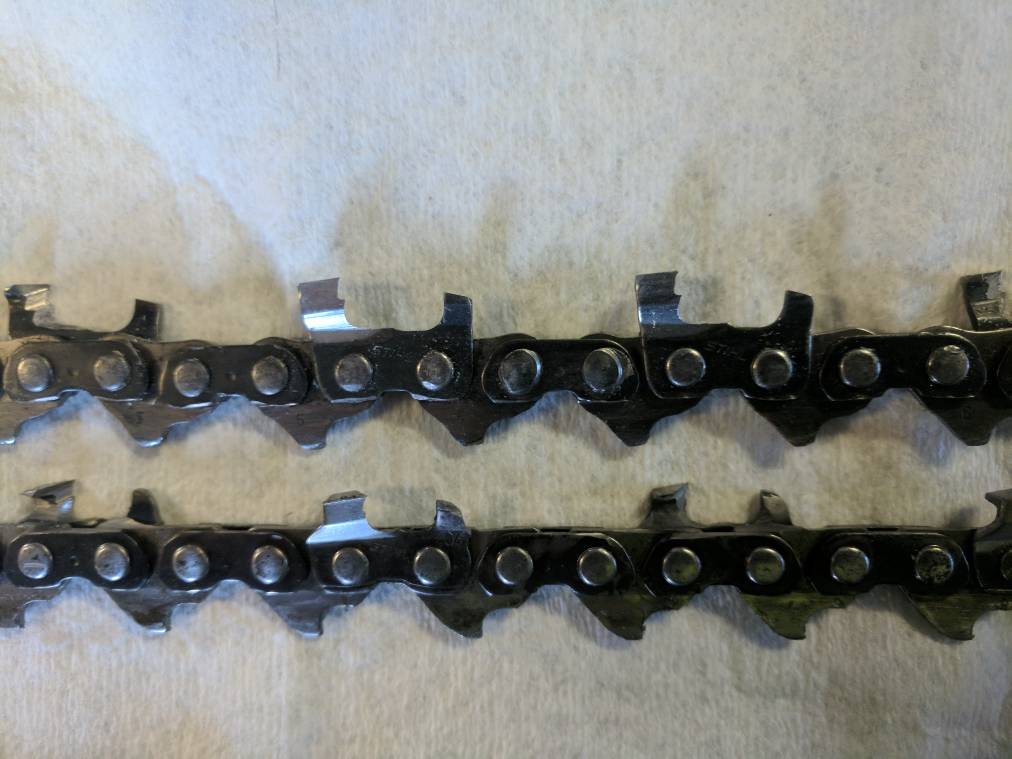Terry Syd
Pinnacle OPE Member
- Local time
- 4:09 AM
- User ID
- 575
- Joined
- Jan 18, 2016
- Messages
- 1,589
- Reaction score
- 5,973
- Location
- Comboyne, NSW Australia
'Chip clearance' is a term that keeps getting batted around. So what is it?
You get comments that it slows down the cutting. OK, why? Well, there are too many chips. So, why does that slow down the cutting - you know, the PHYSICS OF WHY it slows down the cutting.
If any cutting should slow down because of chips, it should be when noodling. The chips are considerably longer than cross-cutting chips. Crikey, look at the amount of wood that comes out of a cut while noodling.
I have a theory that when a raker is pulled over a chip while cutting, the chip decreases the cutting angle of the cutter and tends to take a smaller bite. That theory seems to be supported by the rakers that racers use on their racing chains - they make the front of the raker vertical, probably to block chips from getting under the raker.
If that technique works to prevent 'chip clearance' during racing, it should also work when using a very long bar when you are out logging, like on a big back-cut. Anybody have any experience with modding a chain to decrease/eliminate any problems with 'chip clearance'?
I've never had any problems I can relate to 'chip clearance', however I would like to clarify this concept as it keeps getting thrown around when someone has trouble with a chain.
You get comments that it slows down the cutting. OK, why? Well, there are too many chips. So, why does that slow down the cutting - you know, the PHYSICS OF WHY it slows down the cutting.
If any cutting should slow down because of chips, it should be when noodling. The chips are considerably longer than cross-cutting chips. Crikey, look at the amount of wood that comes out of a cut while noodling.
I have a theory that when a raker is pulled over a chip while cutting, the chip decreases the cutting angle of the cutter and tends to take a smaller bite. That theory seems to be supported by the rakers that racers use on their racing chains - they make the front of the raker vertical, probably to block chips from getting under the raker.
If that technique works to prevent 'chip clearance' during racing, it should also work when using a very long bar when you are out logging, like on a big back-cut. Anybody have any experience with modding a chain to decrease/eliminate any problems with 'chip clearance'?
I've never had any problems I can relate to 'chip clearance', however I would like to clarify this concept as it keeps getting thrown around when someone has trouble with a chain.






